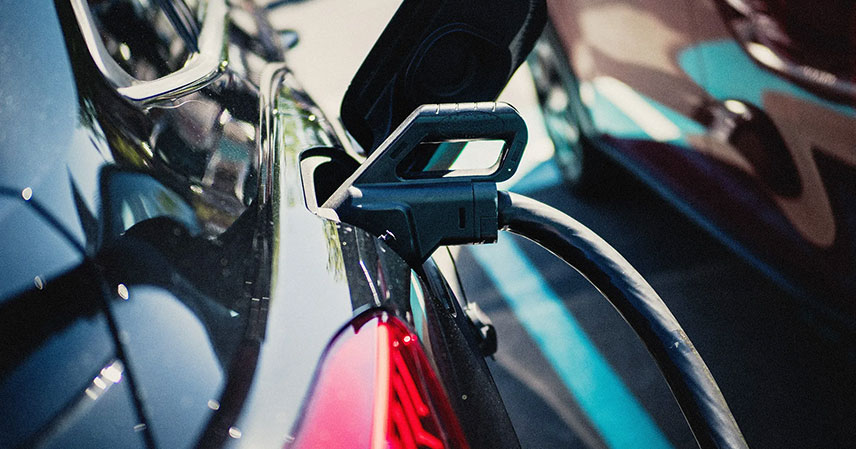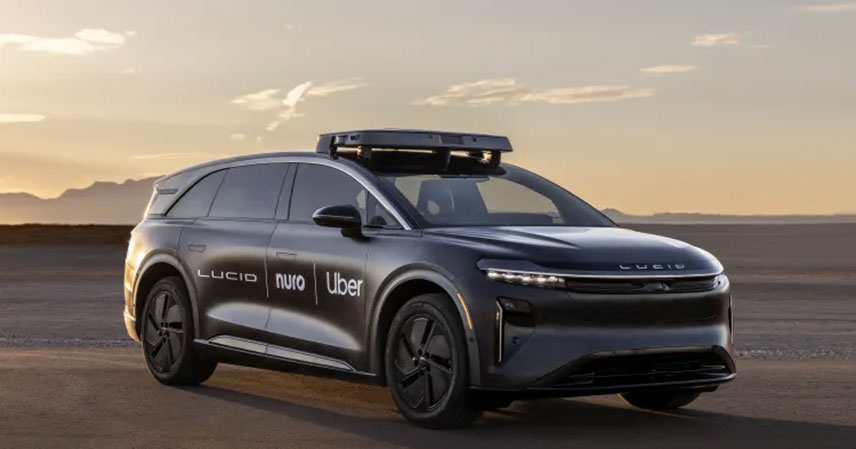Electric vehicles (EVs) are constantly in the news. We frequently see headlines touting “battery breakthroughs.” These announcements promise to revolutionize the industry. Yet, visiting a car showroom often reveals a different reality. Many EVs still feel quite similar.
This disconnect between lab promises and market availability is frustrating. WIRED recently investigated this phenomenon. They spoke with leading battery technology experts. Their goal was to understand the true state of EV battery development. What technologies are ready now? Which ones are on the horizon, but require patience? And what innovations might never see widespread adoption?
As Pranav Jaswani, a technology analyst at IDTechEx, notes, batteries are incredibly complex. “Many little things are going to have such a big effect,” he explains. This complexity drives extensive experimentation. Automakers, suppliers, and battery-makers are all involved. Small changes can yield significant results. For instance, a new conductor material might add 50 miles of range. Adjusting battery pack assembly could lower manufacturing costs. These savings can then benefit consumers.
However, getting these innovations into production cars takes time. Experts suggest it can be 10 years or more. Evelina Stoikou from BloombergNEF highlights the rigorous process. “We want to make sure that whatever we put in an EV works well,” she states. Safety standards are paramount. Scientists develop new ideas. Suppliers then figure out how to produce them. Automakers conduct extensive testing. Every step involves critical financial considerations. Does this improvement make economic sense?
This explains why not every lab breakthrough reaches the road. The journey from concept to consumer is long and challenging. Let’s delve into the technologies that truly matter. We will also examine those that are still developing.
The Dominance of Lithium-Ion: Evolution, Not Revolution 🔋
The vast majority of significant battery breakthroughs share a common thread. They are all enhancements to the existing lithium-ion battery. While other battery chemistries exist, lithium-ion remains the undisputed leader. Its maturity is a major advantage. “Lithium-ion is already very mature,” Stoikou confirms. Substantial investments have been made in this technology. Any new chemistry faces an uphill battle. It must compete with a well-established status quo.
Several key advancements within lithium-ion technology are driving current EV development. These are not entirely new chemistries. Instead, they represent sophisticated refinements. These improvements boost performance, reduce costs, or enhance safety. They are the true game-changers happening right now.
Lithium Iron Phosphate (LFP) Batteries
Lithium Iron Phosphate (LFP) batteries are gaining significant traction. They offer a compelling alternative to traditional lithium-ion. LFP uses iron and phosphate. These materials are much cheaper and easier to source. Conventional batteries rely on nickel and cobalt. These metals are often expensive and ethically challenging to obtain. LFP batteries also boast superior stability. They degrade more slowly over many charge cycles. This extends battery lifespan.
The primary benefit of LFP is cost reduction. It significantly lowers the manufacturing cost of EVs. This is crucial for Western automakers. They struggle to compete on price with conventional gasoline cars. LFP batteries are already common in China. Their adoption is expected to surge in Europe and America. However, LFP has a downside. It is less energy dense. This means less range can be packed into each battery. This trade-off is a key consideration for manufacturers.
Higher Nickel Content
Another area of focus is increasing nickel content in batteries. Specifically, in lithium nickel manganese cobalt (NMC) batteries. More nickel boosts energy density. This translates to greater range in a battery pack. It does so without significantly increasing size or weight. An added benefit is the reduction of cobalt. Cobalt is a costly and often controversially sourced metal. Reducing its use has both economic and ethical advantages.
The challenge with higher nickel content lies in stability. These batteries can be less stable. This increases the risk of cracking or thermal runaway. Thermal runaway can lead to fires. Battery-makers must therefore invest heavily in careful design. This ensures safety and reliability. The extra engineering effort adds to the cost. Consequently, higher nickel batteries are typically found in premium, higher-end EVs. They offer extended range for a higher price point.
Dry Electrode Process
The manufacturing process itself is also evolving. The dry electrode process represents a significant leap. Traditionally, electrodes are made using a solvent slurry. This slurry is applied to a metal foil. It is then dried and pressed. The dry electrode process eliminates most solvents. Materials are mixed as dry powders. They are then applied and laminated. This method has several advantages.
Reducing solvents means fewer environmental concerns. It also improves health and safety in factories. Eliminating the drying step saves production time. It boosts efficiency. It also reduces the physical footprint needed for manufacturing. All these factors contribute to cheaper production. “This should trickle down to make a cheaper car,” says Jaswani. Tesla has already adopted a dry anode process. Other giants like LG and Samsung SDI are piloting this technology. The main hurdle is technical complexity. Working with dry powders can be more challenging to perfect.
Cell-to-Pack Architectures
Battery pack design is undergoing a transformation. Traditional EV batteries group individual cells into modules. These modules are then assembled into a larger pack. Cell-to-pack (CTP) technology bypasses the module step. Cells are placed directly into the pack structure. This innovation allows more battery material in the same space. It can add up to 50 additional miles of range. It can also enable higher top speeds, according to Jaswani.
CTP also drives down manufacturing costs. These savings are passed on to consumers. Major players like Tesla, BYD, and CATL are already using CTP. However, there are trade-offs. Without modules, managing thermal runaway becomes more complex. Maintaining the pack’s structural integrity is also harder. Replacing a single faulty cell is much more difficult. Often, the entire pack must be opened or even replaced. This increases repair costs and complexity.
Silicon Anodes
The anode material is another area of intense research. Conventional lithium-ion batteries use graphite anodes. Adding silicon to the mix offers immense potential. Silicon can significantly increase energy storage. This means longer driving ranges for EVs. It also promises much faster charging times. Some estimates suggest a full top-up in a blazing six to ten minutes. Tesla already incorporates a small amount of silicon into its graphite anodes. Mercedes-Benz and General Motors are also nearing mass production of silicon-enhanced batteries.
However, silicon presents a major challenge. When alloyed with lithium, silicon expands and contracts. This happens repeatedly during charging and discharging cycles. This constant stress can cause mechanical damage. It can even lead to fracturing. Over time, this results in significant battery capacity loss. For now, silicon anodes are more common in smaller batteries. Devices like phones and motorcycles are good examples. Widespread automotive use requires overcoming these durability issues.
Emerging Contenders: The “Kind of Happening” Technologies 🌱
Beyond the immediate advancements in lithium-ion, other promising technologies are in development. These have undergone extensive testing. However, they are not yet ready for mass production. Most manufacturers are not building dedicated production lines for them. Their widespread integration into cars is still some way off.
These innovations represent the next wave of battery evolution. They hold immense promise but face considerable hurdles. Understanding their potential and their challenges is key to assessing their future impact on the EV market.
Sodium-Ion Batteries
Sodium-ion batteries are generating considerable excitement. Sodium is an incredibly abundant element. It is cheaper and easier to find and process than lithium. This offers a significant supply chain advantage for automakers. It could reduce reliance on limited and geopolitically sensitive lithium sources. Sodium-ion batteries also appear to perform better in extreme temperatures. They are generally more stable. Chinese battery-maker CATL plans mass production next year. They project sodium-ion batteries could capture 40 percent of the Chinese passenger-vehicle market.
The main drawback is energy density. Sodium ions are heavier than lithium ions. This means they store less energy per battery pack. This characteristic might make them more suitable for stationary grid storage. They could be less ideal for vehicles requiring long ranges. The technology is also in its early stages. This means fewer suppliers and less time-tested manufacturing processes. Scaling up production efficiently remains a hurdle.
Solid-State Batteries
Solid-state batteries have been hailed as the “holy grail” for years. Automakers have consistently promised their imminent arrival. This technology replaces the liquid or gel electrolytes found in conventional lithium-ion batteries. Instead, it uses a solid electrolyte. These solid electrolytes can come in various chemistries. All promise significant advantages. These include higher energy density, faster charging, and increased durability. Crucially, they pose fewer safety risks. The absence of a liquid electrolyte eliminates leaks and reduces fire hazards.
Toyota has announced plans to launch its first vehicles with solid-state batteries in 2027 or 2028. BloombergNEF predicts solid-state batteries could account for 10 percent of EV and storage production by 2035. Despite the hype, significant challenges remain. Some solid electrolytes struggle at low temperatures. The biggest issues, however, are manufacturing-related. Producing these new batteries requires entirely new equipment. Building defect-free layers of solid electrolyte is extremely difficult. Furthermore, the industry lacks consensus on the best solid electrolyte to use. This fragmentation hinders the development of robust supply chains. The promise is huge, but the path to mass production is complex.
Future Visions and Practical Hurdles: The “Maybe It’ll Happen” Innovations 🔮
Not every brilliant idea translates into a practical, mass-market solution. Some innovations, while appealing, face fundamental economic or logistical barriers. Their widespread adoption remains highly speculative.
These concepts often capture the public imagination. They offer glimpses into a highly convenient or futuristic driving experience. However, the existing infrastructure and cost-effectiveness of current solutions often overshadow their potential benefits. The journey from concept to widespread reality is fraught with challenges.
Wireless Charging
Imagine parking your EV and having it charge automatically. No cables, no plugs, just seamless convenience. Wireless charging offers this vision. It represents the peak of user convenience. Some automakers are actively pursuing it. Porsche, for example, has showcased prototypes. They plan to roll out a real product next year. The appeal of such effortless charging is undeniable for many consumers.
However, the practical hurdles are significant. As Pranav Jaswani points out, current wired charging technology works perfectly well. It is also considerably cheaper to install. This cost disparity is a major barrier to mainstream adoption. Jaswani believes wireless charging will likely find niche applications. Buses, for instance, could charge throughout their routes. They could simply stop on top of charging pads. For individual passenger vehicles, however, the economic case is much weaker. It may never become a truly mainstream feature for home or public charging.
Key Insights for the Road Ahead 🛣️
- Incremental Innovation Dominates: EV battery advancements are largely evolutionary, building upon the mature lithium-ion platform. Revolutionary shifts are rare and take decades to materialize.
- Safety and Cost are Paramount: Every new battery technology or manufacturing process must meet stringent safety standards. It must also offer a clear economic advantage to reach mass production and consumer acceptance.
- Manufacturing Complexity is a Major Barrier: Scaling up new battery chemistries and designs presents immense technical and logistical challenges. Developing reliable, ethical supply chains is equally difficult and critical.
- Specialization is Emerging: Different battery types will likely serve different market segments. LFP for cost-sensitive vehicles, higher nickel for premium long-range EVs, and potentially sodium-ion for stationary storage or urban transport.
- Patience is Key: The journey from lab breakthrough to showroom floor is long and arduous. Consumers and investors should manage expectations regarding “next-generation” battery technologies.
The world of EV battery innovation is dynamic and complex. It is easy to get caught up in the excitement of new discoveries. However, real-world application demands rigorous testing and economic viability. The progress we see is often incremental. It happens behind the scenes in materials science and manufacturing processes. These steady improvements are cumulatively transformative. They are paving the way for more efficient, affordable, and sustainable electric vehicles. Understanding these nuances helps us appreciate the true pace of progress. It also allows us to make informed decisions about the future of transportation.
Source: The EV Battery Tech That’s Worth the Hype, According to Experts



